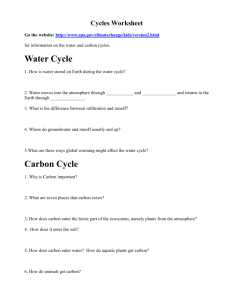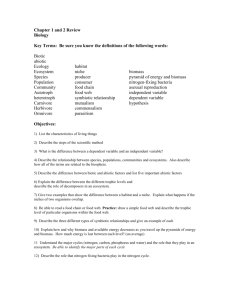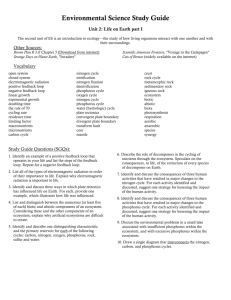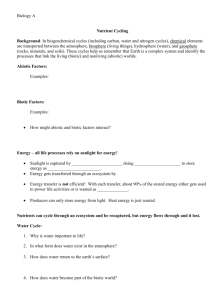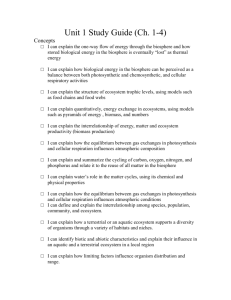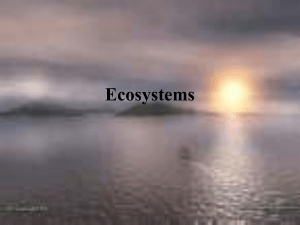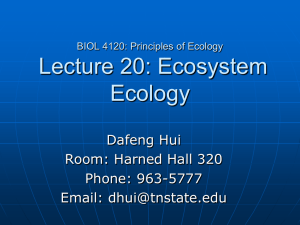Name #___
advertisement
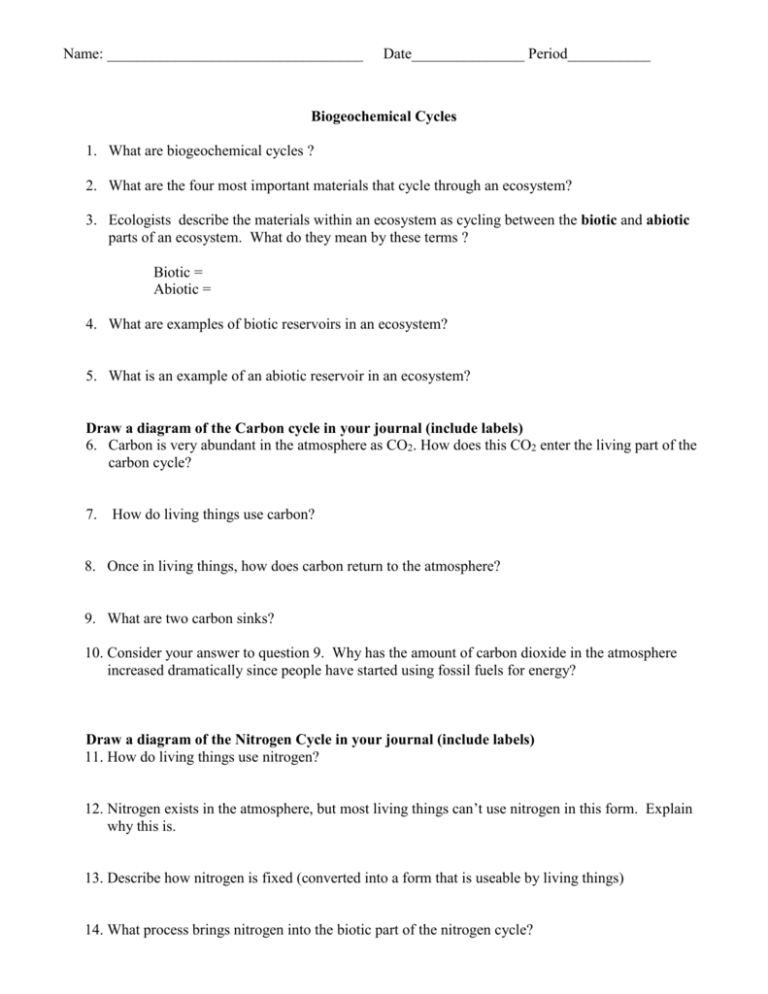
Name: __________________________________ Date_______________ Period___________ Biogeochemical Cycles 1. What are biogeochemical cycles ? 2. What are the four most important materials that cycle through an ecosystem? 3. Ecologists describe the materials within an ecosystem as cycling between the biotic and abiotic parts of an ecosystem. What do they mean by these terms ? Biotic = Abiotic = 4. What are examples of biotic reservoirs in an ecosystem? 5. What is an example of an abiotic reservoir in an ecosystem? Draw a diagram of the Carbon cycle in your journal (include labels) 6. Carbon is very abundant in the atmosphere as CO2. How does this CO2 enter the living part of the carbon cycle? 7. How do living things use carbon? 8. Once in living things, how does carbon return to the atmosphere? 9. What are two carbon sinks? 10. Consider your answer to question 9. Why has the amount of carbon dioxide in the atmosphere increased dramatically since people have started using fossil fuels for energy? Draw a diagram of the Nitrogen Cycle in your journal (include labels) 11. How do living things use nitrogen? 12. Nitrogen exists in the atmosphere, but most living things can’t use nitrogen in this form. Explain why this is. 13. Describe how nitrogen is fixed (converted into a form that is useable by living things) 14. What process brings nitrogen into the biotic part of the nitrogen cycle? Name: __________________________________ Date_______________ Period___________ 15. How do animals obtain the nitrogen that they need? 16. Describe the role of decomposers in the nitrogen cycle. 17. How does the nitrogen re- enter the atmosphere? Draw a Diagram of the Phosphorus Cycle in your journal (include labels) 18. How do living things use phosphorus? 19. Where is phosphorus primarily found in the biosphere? 20. How is phosphorus introduced into an ecosystem? 21. How does phosphorus enter the food chain? 22. How is phosphorus removed from the ecosystem? Draw a diagram of the Water cycle in your journal (include labels) 22. Describe the cycling of water through the abiotic portion of the water cycle. 23. What is ground water? 24. What is the name of the process that water uses to move from plants back into the atmosphere? Describe what happens during this process. 25. What is a limiting nutrient? 26. What happens if the quantity of a limiting nutrient in an ecosystem is increased? 27. How have people benefitted from understanding the principle of limited nutrients?


